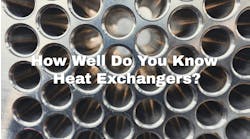Many process plants now operate for long periods of time between scheduled maintenance. It was routine 50 years ago for facilities to shut down annually or even more often for scheduled maintenance. Today, however, an increasing emphasis on reliability, including more condition monitoring and predictive maintenance, means plants frequently run for 4 to 10 years before having to shut down. So, when a turnaround arrives, it may be the first one for much of the staff.
[pullquote]
Engineering schools rarely mention, even once, maintenance requirements. So, the first turnaround you go through provides a tremendous opportunity to learn. It allows you to better grasp how equipment is put together and what common problems in your facility look like. Also, it gives you the chance to use what you know to improve the plant.
The maintenance and inspection department, which plays a key role in a turnaround, has that name for a reason that becomes crystal clear during the turnaround. Servicing of equipment — which often aims to return the units to their design condition — usually demands careful inspection, including of mechanical integrity.
With so much to be done in such a short time, you — despite your inexperience — likely will get drawn into equipment inspection. To do it well, plan and prepare.
Move your thinking past just returning equipment to an “as new” or a “just like the drawing” installation. Field review of equipment should cover initial entry or disassembly, maintenance in progress and final review before closure. Perhaps your observations will suggest modifications to the equipment.
To prepare for your turnaround role, develop a checklist for each item you must inspect. This checklist will vary depending upon equipment type but should include the following:
1. Condition at shutdown. Is the equipment damaged, fouled or in some unusual state? Where is the damage or wear? Erosion near a shell inlet nozzle of a shell-and-tube heat exchanger may indicate high inlet velocities through the nozzle. Are unexpected process conditions the cause? Will installing an impingement plate or switching tube metallurgy avoid such erosion in the future?
2. Planned maintenance. Is the aim to repair damage found or to make modifications? If modifications are intended, what are they and what are the critical factors (type, materials, dimensions, etc.)? List all modifications on your checklist.
3. Dimensions and things to check. Include crucial installation measurements and tolerances — for example, layout dimensions for a new type of distillation tray.
4. Measuring tools. What tools do you need and do you know how to use them? For instance, would go/no-go diameter gauges help you more quickly check a distributor in a reactor? Is a tape measure suitable for checking the height of a drum overflow weir?
5. Special installation procedures. Are unusual steps necessary? For example, some filters using bulk media (sand and other fill) require a particular loading protocol. The initial layer of fill on the support screen often must be a specific size, hand loaded, and then checked after 12–24 hours to confirm no leaks through the screen. Only then can the rest of the media bed be added. Your checklist should include all these steps along with test acceptance criteria.
6. Final check. Is such a check required before equipment closure? Who will do the check? Who will take responsibility (signoff) on the check?
7. Schedule. The checklist must include the planned schedule of all your inspection activities. The schedule should identify the time and duration of inspections. It helps you know where and when you will be needed — and also identifies potential conflicts.
8. Safety requirements. For each inspection, you must know what safety equipment you need and where you will get it. Are you trained to use it? Do you have the required training for all your activities — e.g., confined space entry, fall protection and identifying special hazards?
When you go to perform the inspections, bring a camera (after, of course, obtaining any necessary clearance and meeting any other requirements for camera use). Take pictures every time you inspect something; don’t hesitate to photograph inside equipment. You undoubtedly will find these pictures useful latter on. Any time a question comes up about the equipment or installation or for troubleshooting, photos are invaluable. Moreover, they can clarify terms in inspection reports subject to different interpretations, such as what “heavily fouled” actually means.
Finally, remember that inspection involves more than just going down your checklist. At every point, inspect with your mind, not just your eyes. Ask — even if an installation perfectly matches what’s called for in the drawings — does this equipment layout make sense? Why is the installation being done one way instead of another? Inspection is the last chance to ensure the plant works as needed. Don’t squander the opportunity.
ANDREW SLOLEY is a Chemical Processing contributing editor. You can email him at
[email protected].

